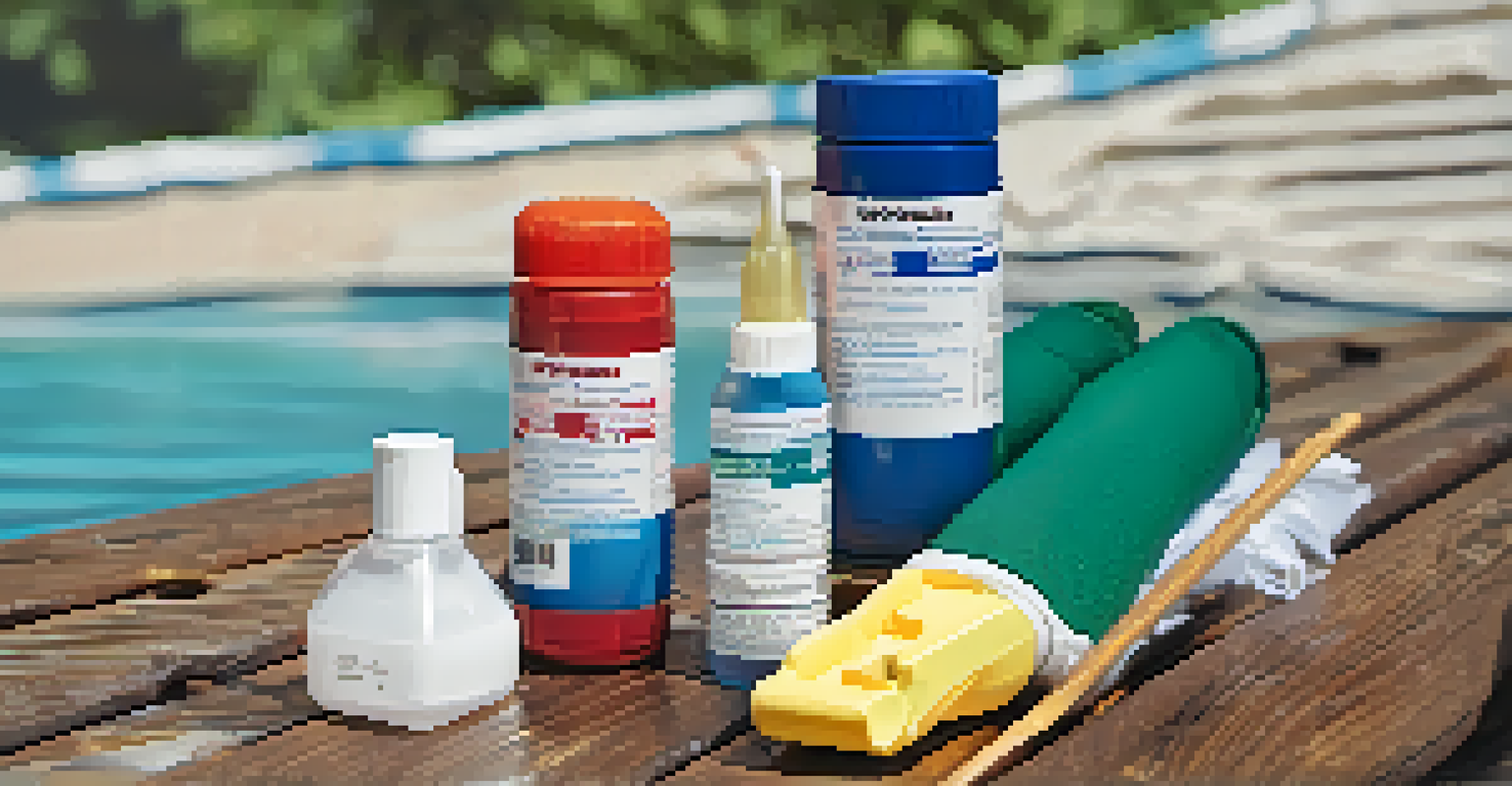Summer Pool Maintenance: Essential Tips for Homeowners

Understanding the Basics of Pool Maintenance
To keep your pool in top condition, it’s important to understand the basics of maintenance. Regular upkeep ensures a clean and safe swimming environment for your family and friends. Think of your pool as a living entity that needs attention to thrive, much like caring for a garden.
An ounce of prevention is worth a pound of cure.
Start by familiarizing yourself with the key components: water chemistry, filtration, and cleaning. Balancing chemicals like chlorine and pH levels is crucial for safety and comfort. A well-maintained filtration system helps keep debris at bay, much like a strong immune system for your pool.
If you’re new to pool maintenance, consider keeping a checklist to help you stay organized. Regularly checking off tasks can make the process feel less overwhelming and more manageable, ensuring that you don’t miss any important steps.
Testing and Balancing Your Pool Water
Testing your pool water regularly is vital for a healthy swimming experience. Use a test kit to check the pH, alkalinity, and chlorine levels at least once a week. Think of it as checking your car's oil—neglecting it can lead to bigger problems down the road.

Aim for a pH level between 7.2 and 7.8 for optimal comfort and efficiency. If your water is too acidic or basic, it can irritate your skin and eyes, turning a fun day into an uncomfortable experience. Balancing these levels is like finding the perfect recipe; the right ingredients make all the difference.
Regular Testing Ensures Pool Health
Consistently testing and balancing your pool water chemistry is essential for maintaining a safe and enjoyable swimming environment.
Don’t forget about alkalinity, which helps stabilize pH levels. Keeping alkalinity in check is crucial, as it helps prevent sudden fluctuations, much like a stable foundation supports a building.
Cleaning Your Pool: Skimming and Scrubbing
Regular cleaning is essential to keep your pool looking inviting and ensuring safety. Start by skimming the surface for leaves and debris with a net, much like a chef removing unwanted bits from a soup. This simple task can dramatically improve the appearance of your pool.
The best way to predict the future is to create it.
Next, scrub the walls and floor to prevent algae buildup. A good brush and a little elbow grease can go a long way in maintaining the pool's aesthetics and hygiene. Think of it as giving your pool a spa day; it deserves a little pampering to shine.
Finally, don’t forget about your pool’s filters. Clean or replace them as needed to ensure that they’re working efficiently. A clean filter is like a good filtration system in your home—it keeps the environment pleasant and safe.
Maintaining Your Pool Equipment
Your pool equipment, including pumps and heaters, requires regular maintenance to function properly. Make it a habit to check these components for wear and tear, just like you would a car before a long trip. Neglecting equipment can lead to costly repairs down the line.
Ensure that your pump is running efficiently; a well-functioning pump circulates water effectively, keeping your pool clean and inviting. If you notice unusual noises or decreased performance, it might be time for a professional check-up.
Keep Your Pool Clean and Inviting
Regular cleaning, including skimming and scrubbing, is crucial to prevent algae buildup and maintain the pool's appearance.
Also, inspect your heater regularly to ensure that it’s heating the water to your desired temperature. Nothing is worse than jumping into a cold pool on a hot summer day, so proactive maintenance is key to comfort.
Safety First: Checking Pool Safety Measures
Safety should always be a top priority when it comes to pool maintenance. Regularly check your pool’s safety features, such as fencing, gates, and alarms. These elements act as crucial barriers, much like a seatbelt in a car, protecting your loved ones while they enjoy the water.
Make sure that gates close securely and that fences are in good condition. Any gaps or weak spots can pose a serious risk, especially with young children around. Think of these measures as your first line of defense against potential accidents.
Additionally, consider having safety equipment nearby, such as life rings and first aid kits. Being prepared can make a world of difference in emergencies, allowing you to act quickly and confidently.
Dealing with Algae and Other Pool Problems
Algae can be a persistent problem during the summer months, but with the right approach, you can keep it at bay. If you notice green or murky water, it’s a sign that algae are taking over. Think of it as an unwelcome party guest; it’s best to address it promptly before it gets out of hand.
To tackle algae, shock your pool with a high dose of chlorine to kill off any excess growth. After shocking, brush the walls and vacuum the floor to remove dead algae. Regular maintenance and prompt action will help you maintain a crystal-clear pool, so you can enjoy sunny days worry-free.
Prioritize Safety Features
Regularly checking pool safety measures like fences and alarms is vital to protect your loved ones while using the pool.
Also, consider adding algaecide as a preventative measure during the peak summer months. A little extra care goes a long way in ensuring that your pool remains a relaxing oasis rather than a green swamp.
Preparing Your Pool for Seasonal Changes
As summer winds down, it’s important to start preparing your pool for seasonal changes. This includes adjusting your maintenance routine to accommodate cooler temperatures and falling leaves. Think of it as getting your home ready for winter; a little preparation now can save you a lot of trouble later.
Begin by continuing to monitor water chemistry and cleaning as needed, but expect to deal with more leaves and debris. You might want to invest in a pool cover, which helps keep your pool clean and reduces maintenance during the off-season. It’s like putting a cozy blanket over your pool.

As temperatures drop, consider lowering the water level slightly to prevent freeze damage. This step is essential if you live in an area that experiences harsh winters, ensuring that your pool is ready when spring arrives.